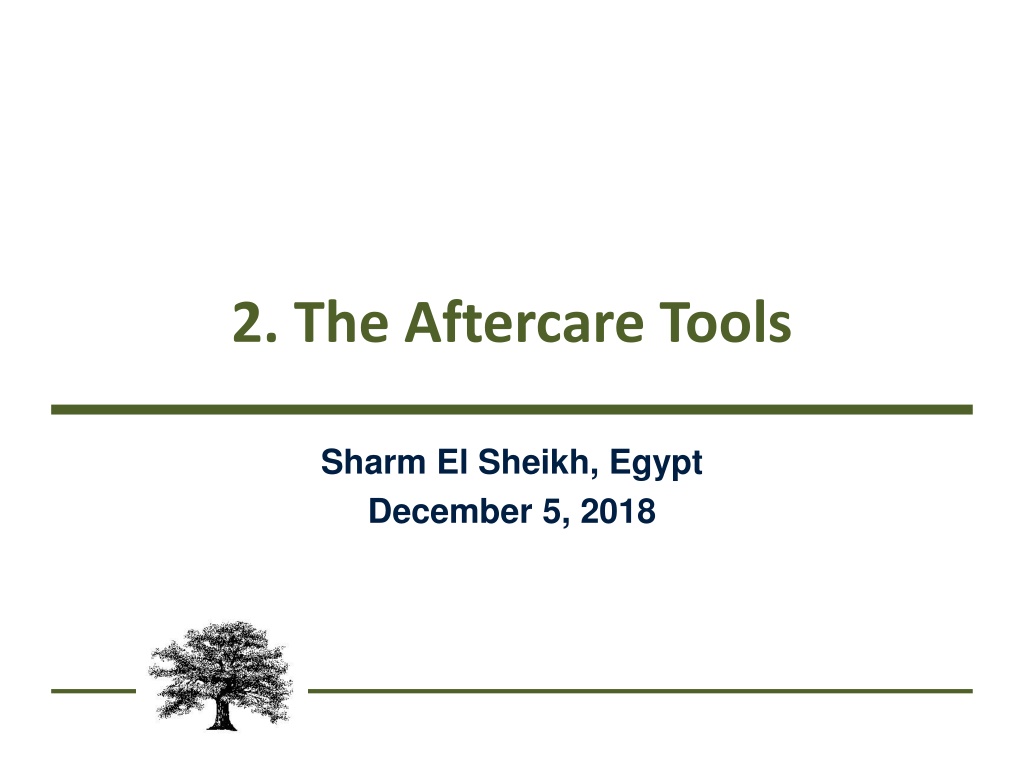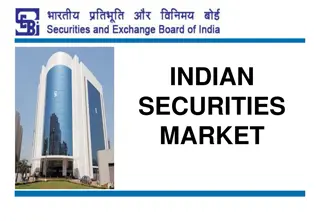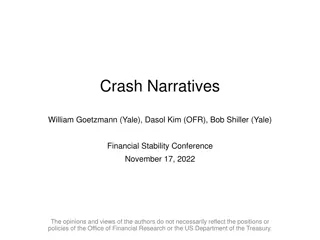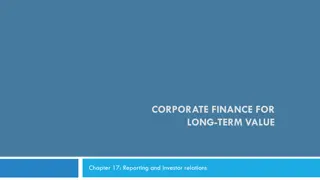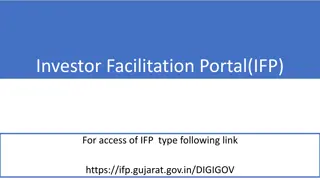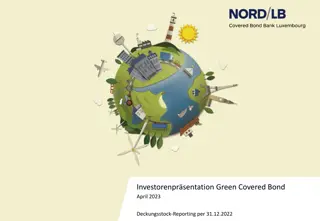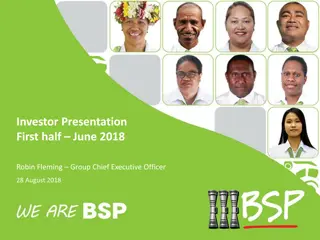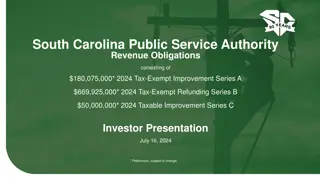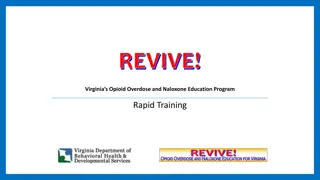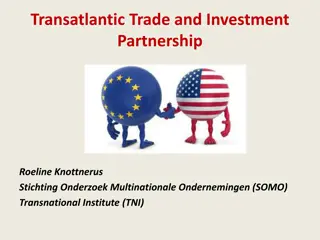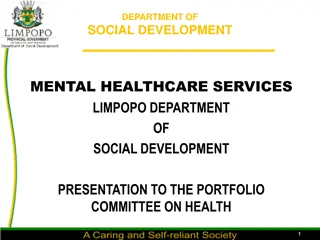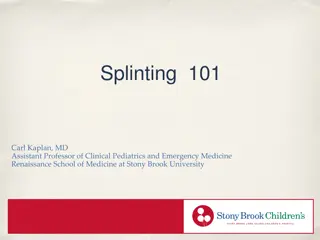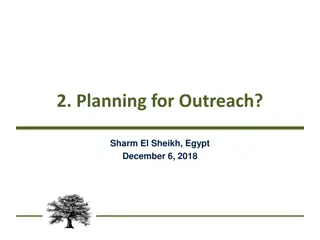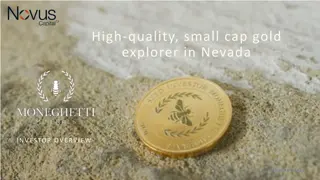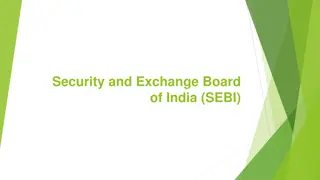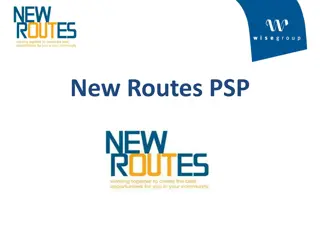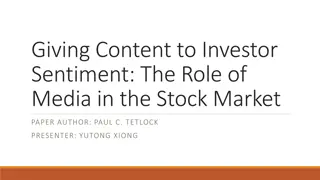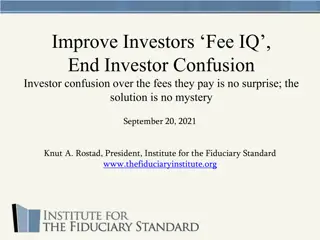Comprehensive Guide to Investor Aftercare Tools and Information
Understanding the key aftercare tools such as Investor Information System (IIS) and Investor Tracking System (ITS) is essential for effective investor support. Preparing the right information for aftercare involves research, presentation, and data analysis to address specific challenges and opportunities. The aftercare information cycle emphasizes collecting and analyzing data to shape policy advocacy and enhance sector profiles.
Download Presentation

Please find below an Image/Link to download the presentation.
The content on the website is provided AS IS for your information and personal use only. It may not be sold, licensed, or shared on other websites without obtaining consent from the author. Download presentation by click this link. If you encounter any issues during the download, it is possible that the publisher has removed the file from their server.
E N D
Presentation Transcript
2. The Aftercare Tools Sharm El Sheikh, Egypt December 5, 2018
Aftercare Tools The key aftercare tools: Investor Information System (IIS); Investor Tracking System (ITS) and/or Database tracking relationship and activities with investors; The Investor Aftercare Survey. A brochure on the aftercare program and services offered by the IPI (also update on website). Existing tools (IIS and ITS) will have to be adapted to be able to capture: The aftercare dimension of the relationship; and The type of activities and goals of the program.
Preparing the right Information for Aftercare There are 2 main levels of information: The aftercare services that you will offer (internal organization); and Information to support companies in their challenges and opportunities. Once you have decided what services you will provide, put them in a special brochure and the website. Preparing the right information for aftercare is about researching and preparing presentations that allow you to understand as well as present: The environment companies are working in countrywide and within specific locations in the case of regions or cities; The strategic sector (or more general industry issues) you are covering Challenges and opportunities;
Preparing the right Information for Aftercare Preparing the information for aftercare is also necessary to be able to identify and propose (to partners) about putting together specific solutions to: Address specific issues investors are facing; or To enhance or activate specific opportunities. With new aftercare programs, some of the information needs to be collected first. This applies particularly when the IPI needs to better understand the local challenges and opportunities. These can be discovered mainly through the aftercare visits (not just to companies but also to partners) These also open a new aftercare work space which is identifying and working on Operational issues and opportunities.
Aftercare information cycle Analyzing collected data to feed the policy advocacy agenda and to strengthen existing sector information profiles. Collecting / using data to decide what the aftercare program wants to achieve. Sets the foundation of strategy. Sector SWOT analyses; specific investors impacting local economy/ies and sectors. The data analyzed will feed the next investment promotion and aftercare strategy. Data mainly from investors; discovering new sector trends; circumventing of existing constraints; competitiveness factors (logistics, labor ), on- going constraints. Data from prior aftercare visits; policy advocacy docs; reviewing new legislation; new sector trends, govt. programs & cost structures Collecting data from aftercare visits: constraints and operational (sector). Collecting and analyzing data on criteria chosen for program: Constraints and opportunities. Source: World Bank Group
The Investor Information System Information and the IPI s capacity to collect it and analyze it is what fuels the aftercare process. Partners are essential at not just retrieving the data needed but also are the experts who can help us make sense of the data. The data collected throughout the process is key in leading the reform process. From the information come the solutions. KEEP YOUR INFORMATION SYSTEM UP TO DATE!! No matter who you meet or what promotion activity you do, be always alert and collect all relevant and important information. You are salesperson of your country/region and the best are always the best informed!
The Investor Tracking System There are many different types of ITS being used by IPIs around the world. Use one that works for you and that: The IPI team will know how to use and will use, and It is easy to update and maintain. Some IPIs will have separate tools: an Investor database and an investor tracking system. The ITS is a key component and must be configured to: Capture all the relevant information of investors, and Capture carefully the development of the relationship with the investor.
The Investor Tracking System The ITS is the tool which will allow you to: Monitor the ongoing activities of your aftercare program; Take stock of the results of your aftercare program; and Support and assist the development of all future aftercare programs. The investor information fields in your ITS should mirror most of the information you collect during your aftercare visits (survey). The rest of the ITS fields should provide you with a simple and rational system to identify the different stages of management of your aftercare activities with each investor.
Example of some of the investor information fields to be included in your ITS Contact and background information, including: Parent company details beyond location such as: Different products and subsidiaries, global employment, global sales and any other outstanding information concerning any recent investments and/or plant locations within region and country. Details of the company s investment at the location you are visiting including: Ownership, Year of establishment, employees, sales, export figures and markets. Size of plant (Sq. mt.), use of water and electric consumption (quantities). Type of employment, technological content of production. Suppliers, local and international, growth prospects, satisfaction with the investment climate. Have they benefitted from incentives and which institutions have been helping the investor with their project.
Tracking the relationship with the investor The management aspect of the relationship should also include some fields which will make it then easy to maintain the relationship and provide an excellent level of service. Responsible investment officer. Upon visiting the company Is there a re-investment project? Danger of delocation? Looking for suppliers or technical partners? No further action required? When you contacted the company and information or service provided. When should the company be revisited or followed up. Ultimately, the fields should be developed and adapted to each IPI s responsibility and / or activity sphere.
The Survey There are different potential approaches to the survey: Have more than one survey adapted to different type of companies: industry and services. Have one General survey which is then adapted before every company visit. The aftercare survey should be a flexible and live tool. The survey questionnaire should be filled out by the investment officer before the company visit to the best of his capacity. The questionnaire can be edited prior to the visit to better serve as a guide. The survey questionnaire should not be filled out during the visit.
Info Management Company Action Plans A document used to engage investors in a strategic relationship. Used during customer visits to Identify company goals and time horizons Anticipate obstacles Identify areas for IPI assistance Understand and monitor the company s metrics for success and potential for national benefit Establish and monitor company-specific metrics for successful aftercare
Aftercare Means and Communicating the Aftercare Program Delivering an aftercare program also needs different means. Means are avenues to deliver effectively the desired activities. Communicating the IPIs and partners aftercare services but more importantly, communicating specific challenges and opportunities. The most common are the visits to investors but there are also others which may be less personalized and target larger groups. These have a more informative goal and are meant to reach out on different issues or areas of interest. These also allow IPI s to be identified as those who are leading the aftercare process and the institution which investors can reach out to.
